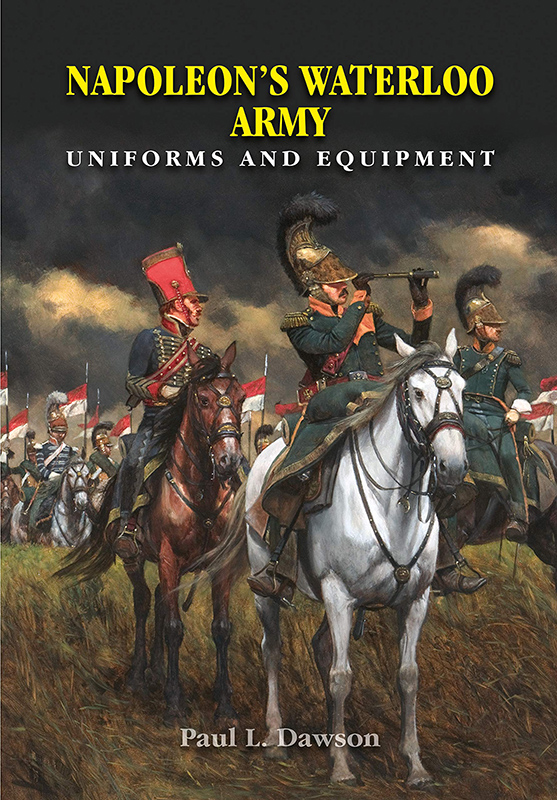Book
Review:
Napoleon's Waterloo Army: Uniforms and Equipment
by Paul Dawson

 Being the proud owner of an extensive home Napoleonic library I keep getting asked about when I will get the time to re-read all the wonderful titles I have.
Being the proud owner of an extensive home Napoleonic library I keep getting asked about when I will get the time to re-read all the wonderful titles I have.
Truth be told I am not sure.
Definitely in retirement and, now being a happy resident of New York City, there are those winter snowy days and early evenings.
My library is also regularly dipped into when I am wanting to find information for one of my novels.
And Paul Dawson has done me - and a lot of Napoleonic devotees — a massive favour by producing an absolutely astounding volume of work that has everything you will likely ever need to know about the French army's uniforms and equipment at Waterloo.
How long did it take for him to put together the information within this almost 700-page volume of work?
Ten years of research, with much of it through primary source material in French archives.
So what sort of things are covered by Dawson?
It is probably easier to say what is not.
But seriously, let's take the French 105th Regiment of Line as an example of what you can expect.
The 105th is the regiment that lost its eagle to the Ist Royal Dragoons. It was carried by Lt Jean Chantelat, who was born in Bourges on October 20, 1769, and had served with the 105th since April 15 1794.
And this is where Dawson's work is really cool. By checking the regimental records and individual soldier's details we know Chantelat rose through the ranks and was promoted to lieutenant on July 7 1813. From November of that year he carried the regimental eagle.
At Waterloo his regiment fought with the Union Brigade, he was wounded in the left leg by a pistol shot and had the eagle wrested from his hand by Captain Clarke Kennedy.
Dawson says Kennedy reported the eagle carrier killed, however, he survived and eventually was discharged from the 105th on September 1 1815.
The author notes that Kennedy could be correct and that another officer took over l'aigle after Chantelat was wounded.
There are also astounding personal details on the second and third porte-aigle, those backing up Chantelat, including names, birth dates, length of service, and how tall they were.
Astonishing stuff in my view.
Back to the 105th. On the morning of Waterloo it had 42 officers and 941 men. The regiment lost 450 men (48 percent of effective strength) the vast majority of whom were captured.
The regimental papers from 2018 state 23.45m of blue wool cloth was bought for new jackets. The cost? 242.70 francs.
In addition to such wonderful historical detail, which opens new windows into the Napoleonic Era, there is an astonishing number of photographs of uniforms. Shakos, portraits, Corps equipment charts, uniform needs, breastplates, greatcoats, saddles, the lists go on.
Honestly, you could find something new to delve into each time you pick this book up.
And I reckon I have left the best to last.
The first-hand accounts and regimental papers and documents gave Dawson "80,000" data points with which to use for insights into the battle of Waterloo.
"By looking at which companies of a battalion took the most casualties, we can start to say on which flank a regiment was most affected."
More than 200 years after a battle in which exact details are hard to come by — due to the reliance on first-hand eyewitnesses during the most stressful time they would likely ever face — I would say that is impressive.
And Napoleon's Waterloo Army: Uniforms and Equipment is very, very impressive indeed.
-
Richard Moore
9/10
Napoleon's Waterloo Army, Uniforms and Equipment, by Paul Dawson.
Frontline Books, ISBN: 1526705281.
Pages: 693.
Illustrations: Way too many to count.